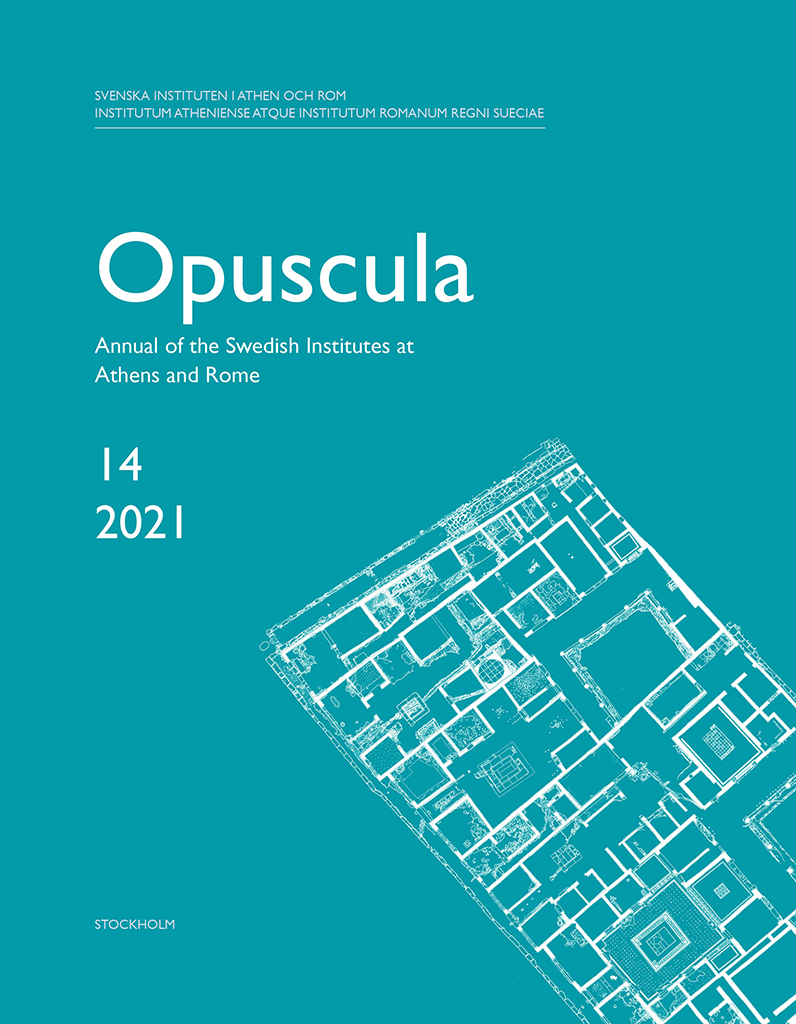Opuscula 14 is published with open access. Printed edition distributed by Eddy.se AB. Also available at Amazon.com, Adlibris, and Bokus. View volume at ERIH PLUS. From 2D and 3D documentation to 4D interpretation. Building archaeological conclusions and workflow strategies gained by remote study of Insula V 1, Pompeii By Anne-Marie Leander Touati (Lund University, Sweden), Thomas Staub (Lund University, Sweden) & Renée Forsell (Lund University, Sweden) Abstract The text describes new methods elaborated for and used in the building archaeological assessment of a city block, studied first on site, then remotely by members of the Swedish Pompeii Project. Use of a digital platform, with collected wall observations and analysis, systematic photographic documentation of all standing structures, and 3D models, allowed discussion to proceed after the fieldwork came to an end. The models provided new possibilities and new angles of approach, e.g. examining walls at any given point, studying boundary walls as wall-strings in their full extent, allowing all kinds of sectioning at will, introducing bird’s-eye views as a new perspective in study, and measuring wherever needed. The joint results obtained are summed up in a four-phase development of the use of space: the earliest structures; the late Samnite building boom (2nd…
Opuscula 14 is published with open access. Printed edition distributed by Eddy.se AB. Also available at Amazon.com, Adlibris, and Bokus. View volume at ERIH PLUS. The cisterns of the Bisti promontory at Hermione. With a preliminary description of the Roman aqueduct By Patrik Klingborg (Swedish Institute at Athens, Greece) Abstract This article reports the findings of the fieldwork exploring the cisterns at the Bisti promontory of Hermione, executed as part of a collaboration between the Ephorate of Antiquities of the Argolid and the Swedish Institute at Athens. In order to better understand the function of the cisterns within the water supply system, the article begins by presenting an overview of existing water resources in the area, primarily the naturally occurring sources and the city’s 2nd-century AD Roman aqueduct. Following this the study describes the remains of the 14 potential cisterns on the Bisti. Based on the empirical material the similarities and contrasts between these are explored, as well as what they can tell us about the history and life in ancient Hermione. In particular, the article suggests that the presence of the cisterns contributes to our understanding of the urban fabric of the city, and reveals important information about when…

